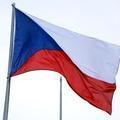Prague, Mother of Cities
Prague is the capital and largest city of the Czech Republic. Nicknames for Prague have included Prague – Mother of Cities, City of a Hundred Spires, Golden City.
Situated on the Vltava River in central Bohemia, Prague has been the political, cultural and economic centre of the Czech state for more than 1,100 years. For many decades during the Gothic and Renaissance eras, Prague was the permanent seat of two Holy Roman Emperors and thus was also the capital of the Holy Roman Empire. At the present time the city proper is home to about 1.3 million people, while its metropolitan area is estimated to have a population of over 1.9 million. Since 1992, the extensive historic centre of Prague has been included in the UNESCO list of World Heritage Sites, making the city one of the most popular tourist destinations in Europe, receiving more than 4.1 million international visitors annually, as of 2009. Prague is classified as an alpha- world city.
The history of Prague spans thousands of years, during which time the city grew from a castle known as Vyšehrad to the multicultural capital of a modern European state, the Czech Republic. The area on which Prague was founded was settled as early as the Paleolithic age. Around 200 BC the Celts established a settlement in the south, called Závist, but by the 1st century BC, they were replaced by the Marcomanni ( and possibly the Suebi), a Germanic people who either migrated westwards or were assimilated in the 6th century AD, during the great migration period following the collapse of the Roman empire, by the invading West Slavic people. According to legends, Prague was founded by Libuše and her husband, Přemysl, founder of the dynasty of the same name. Whether this legend is true or not, Prague's first nucleus was a castle on a hill commanding the left (western) bank of the Vltava River: this is known as Prague Castle, to differentiate from another castle, which was later, in the latter part of the 9th century, erected on the opposite right (eastern) bank the Přemyslid fort Vyšehrad, which is now wrongly considered as the oldest one. The city became the seat of the dukes, and later kings, of Bohemia. Under Emperor Otto II the city became a bishopric in 973. Until Prague was elevated to archbishopric in 1344, it was under the jurisdiction of the Archbishopric of Mainz. Prague flourished as a great slave market. It was an important seat for trading where merchants from all of Europe settled, including many Jews, as recalled in 965 by the Jewish merchant and traveller Ibrahim ibn Ya'qub. The Old New Synagogue of 1270 survives. King Vladislaus II had a first bridge on the Vltava built in 1170, the Judith Bridge, which was destroyed by flood in 1342. In 1257, under King Ottokar II, Malá Strana ("Lesser Quarter") was founded in Prague on a place of an older village in the future Hradčany area: it was the district of the German people. These had the right to administer the law autonomously, pursuant to Magdeburg rights. The new district was on the opposite bank of the Staré Město ("Old Town"), which had a borough status and was defended by a line of walls and fortifications.

